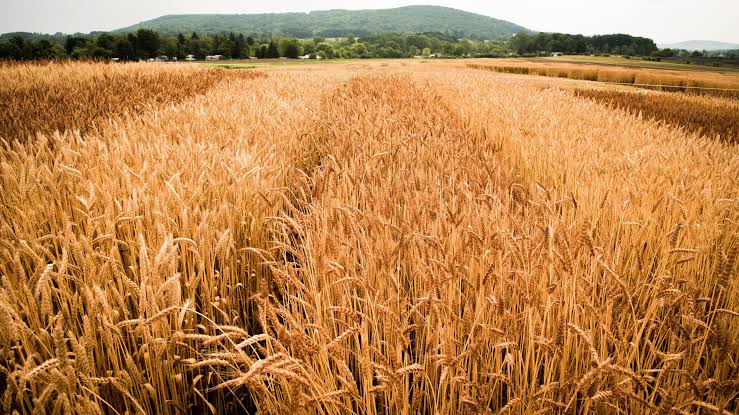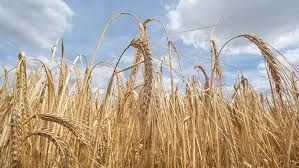Barley is a special kind of plant that people have been growing for a very long time. It’s a type of cereal grain, like rice or wheat. People use barley for many different things, and it has a lot of interesting features.
Firstly, barley is often used to make food for both humans and animals. People grind the barley seeds into a powder called flour, and they use this flour to make bread, cakes, and other tasty treats. Animals, like cows and chickens, also enjoy eating barley as part of their meals.
One amazing thing about barley is that it’s very good for you. It has important nutrients that can help keep your body healthy. For example, barley is rich in fiber, which is good for your digestion. It also has vitamins and minerals that your body needs to stay strong.
Another interesting fact about barley is that it can be used to make a special drink called barley water. This drink is refreshing and can be enjoyed hot or cold. People sometimes add lemon or honey to give it a delicious flavor.
Farmers around the world work hard to grow barley. They plant the barley seeds in fields, and the plants grow tall with beautiful golden heads. When the barley is ready, farmers harvest it and collect the seeds. This process is important for making sure there is enough barley for everyone to enjoy.
Barley is also used in brewing, where it plays a crucial role in making beer. The grains are malted, which means they go through a process to prepare them for brewing. This adds flavor and helps create the fizzy bubbles in beer.
In addition to being a tasty and nutritious food source, barley is helpful to the environment. The plant’s roots help prevent soil erosion, keeping the land healthy. This makes barley a valuable crop for sustainable farming.
Barley is a versatile and essential grain that has been a part of human history for centuries. From being a staple in our diets to contributing to the production of beverages, barley holds a special place in agriculture and culinary traditions around the world. So, the next time you enjoy a slice of bread or sip on a cold barley drink, remember the humble yet significant role that barley plays in our lives.
Read Also: Major Disadvantages of Snail Farming / Snail Rearing
How to Grow Barley

Growing barley is a rewarding process that involves a few key steps:
1. Choose the Right Variety: Start by selecting a barley variety that suits your climate and soil conditions. Barley comes in different types, so it’s essential to pick one that will thrive in your specific region.
2. Prepare the Soil: Barley prefers well-draining soil with good fertility. Ensure the soil is free of weeds and debris. You can enhance fertility by incorporating organic matter like compost.
3. Planting Barley Seeds: Barley is typically sown in either the fall or early spring, depending on your climate. Scatter the seeds evenly over the prepared soil and cover them with a light layer of soil. Water the area gently to settle the seeds.
4. Provide Adequate Water: Barley needs consistent moisture during its growing period. Water the plants regularly, especially during dry spells. However, be cautious not to overwater, as barley does not like waterlogged conditions.
5. Fertilize as Needed: Barley generally requires less fertilizer compared to other crops. However, you can apply a balanced fertilizer when the plants are in their early growth stages.
6. Monitor for Pests and Diseases: Keep an eye out for common barley pests and diseases. If you notice any issues, address them promptly using appropriate measures to protect your crop.
7. Consider Crop Rotation: To prevent soil-borne diseases and pests, practice crop rotation. Avoid planting barley in the same area year after year.
8. Harvesting Barley: Harvest barley when the grains are fully mature. This is usually when the plants have turned golden brown, and the seeds are hard. Use a combine harvester for larger fields, or hand tools for smaller plots.
9. Drying and Storing: After harvesting, allow the barley to dry thoroughly. Once dry, store it in a cool, dry place to prevent mold or spoilage.
Remember, local climate conditions and specific barley varieties may influence the details of the growing process. Always consult with local agricultural extension services or experienced farmers for tailored advice based on your specific location.
How to Harvest Barley?

Harvesting barley involves a few steps to ensure you collect the grains at their peak maturity:
1. Determine Maturity: Barley is ready for harvest when the grains have turned a golden or light brown color, and the plant has dried down. Test a few grains to ensure they are hard and not easily dented.
2. Timing is Crucial: Harvest timing is critical for optimal yield and quality. Aim to harvest when the barley moisture content is around 20-25%. If harvested too early, the grains may not be fully developed; if harvested too late, they may shatter during harvesting.
3. Use the Right Equipment: For larger fields, a combine harvester is commonly used for efficient harvesting. The combine cuts the barley plants and separates the grains from the straw.
4. Adjust Combine Settings: Set the combine to the appropriate settings for barley. This includes adjusting the cutting height and cylinder speed to ensure efficient threshing and separation of grains.
5. Monitor Weather Conditions: Harvest on a dry day to prevent excess moisture in the harvested barley. Wet conditions can lead to difficulties in drying and potential quality issues.
6. Check Combine Performance: Regularly inspect the combine to ensure it is functioning properly. Clean out any buildup of chaff or debris that may impact performance.
7. Swathing (Optional): In some regions, farmers may choose to swath barley before harvesting. This involves cutting the plants and laying them in windrows to dry before the combine harvests them.
8. Collecting the Grains: The combine collects the barley grains and separates them from the straw and chaff. The grains are then deposited into a storage tank on the combine.
9. Transport to Storage: Once the storage tank is full, transfer the harvested barley to storage bins. It’s essential to store barley in a cool, dry place to prevent mold and maintain quality.
10. Post-Harvest Cleaning: After harvesting, clean and inspect the combine to remove any remaining plant material. This helps prevent the spread of diseases and pests to the next crop.
Harvesting barley efficiently and at the right time contributes to a successful crop. Always follow best practices, and consider local climate conditions and specific barley varieties for the most effective harvest.
Read Also: Basic Advantages of Snail Farming
How to Grow Barley in my Backyard?

Growing barley in your backyard can be a rewarding experience. Here’s a simple guide to get you started:
1. Selecting Barley Seeds: Choose a barley variety that suits your climate. Some varieties are better suited for cooler or warmer regions.
Purchase high-quality barley seeds from a reputable source.
2. Preparing the Soil: Barley prefers well-draining soil with a slightly acidic to neutral pH. Clear the area of any debris, rocks, or weeds. If your soil lacks organic matter, consider adding compost or well-rotted manure to improve fertility.
3. Planting Barley Seeds: Barley is typically sown directly into the soil. Plant the seeds at the recommended depth (usually about 1-2 inches) and space them according to the instructions on the seed packet. Water the area after planting to help settle the soil around the seeds.
4. Watering: Barley needs consistent moisture, especially during germination and early growth. Water the plants regularly, ensuring the soil remains evenly moist but not waterlogged.
5. Sunlight: Barley prefers full sun, so choose a location in your backyard that receives plenty of sunlight throughout the day.
6. Fertilizing: Barley generally doesn’t require heavy fertilization, especially in a backyard setting. If your soil lacks nutrients, consider using a balanced fertilizer at the time of planting.
7. Thinning (Optional): Once the barley plants have sprouted and are a few inches tall, you can thin them to ensure proper spacing. This helps each plant receive adequate sunlight and nutrients.
8. Weeding: Keep the area around the barley plants free from weeds. Weeds can compete with barley for nutrients and water.
9. Harvesting: Harvest the barley when the grains have turned a golden color, and the plants have dried down. You can test a few grains to ensure they are hard and fully developed. Cut the barley plants at ground level using shears or a sickle.
10. Drying and Storing: Allow the harvested barley to dry thoroughly before storing. You can do this by spreading the grains in a thin layer in a well-ventilated area.
Once dry, store the barley in a cool, dry place in airtight containers.
Remember to tailor these steps based on your specific backyard conditions and the local climate. Enjoy the process of growing your own barley and the satisfaction of harvesting a homegrown crop.
Read Also: Main Goals of Advertising and Marketing
